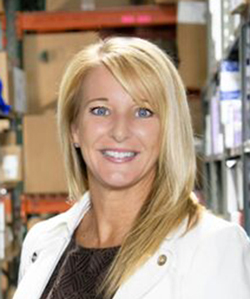 Maryellyn Cullity
Maryellyn Cullity
Sales manager
Claflin Co.
Warwick, Rhode Island
Vice chair, HIDA Physician Advisory Council
Journal of Healthcare Contracting: Describe the physician distributor of 2027. How will that distributor resemble – and differ from – today’s distributor?
Maryellen Cullity: The physician distributor of 2027 will have the ability to service customers nationally, will have an advanced e-commerce infrastructure, a sensational technology platform, a decreased sales force, and some sort of vertical integration. The core of the company will be similar to the distributor model of today, but I believe the emphasis will be on standardization, automation, data sharing, declining costs, manufacturer relationships and infrastructure.
The customer of 2027 will be highly educated, centralized, and will rely on automated versus manual processes. They will be driven by data and outcomes. They will be responsible for a continuum of care, so the distributor will have one call point. Because of the diversity of the customer, the distributor will need to be nimble in their ability to service all markets. The physician distributor that lacks an acute presence today will have to make itself visible to these new customers, who will be in the acute space or business space.
JHC: How are today’s physician distributors moving toward that vision for 2027? What obstacles do they face in doing so?
Cullity: Physician distributors are investing in infrastructure and technology to better align themselves with their growing customers. They are adapting to the increased geographical footprint of their customers while providing them with the data they need to help them standardize and implement changes that will result in cost savings. Distributors are supporting their customers’ goals of standardization and then negotiating, on behalf of their customer, for volume discounts. Distributors are investing heavily in technology that will help them excel at process improvement, electronic order exchange, automatic procurement processes, and invoicing.
Building the infrastructure to support the size of some of these healthcare giants is not an easy task. It requires a huge investment and a dedicated team to succeed.
JHC: How will the supply chain executive’s (or department’s) relationship with that distributor of 2027 differ from the typical relationship of 2017?
Cullity: The supply chain executive of 2027 will have a partnership with their distributor. They will have transparent goals, which both will work to achieve. The focus, as we are starting to see today, will be standardization of products throughout the network, price parity, contract compliance, better inventory management, negotiations with manufacturers for lower costs, and providing products that will result in value and the best clinical outcomes. The price negotiator of today will disappear and partnerships will take precedence.
JHC: How can/should supply chain executives be preparing themselves, their departments and their institutions for a mutually productive relationship with the physician distributor of 2027?
Cullity: Supply chain executives should be partnering with their physician distributors now. They should consolidate as many of their purchases through this prime partner and eliminate excess vendors. They should be requesting data from their suppliers that will help them to standardize high-spend items.
Their distributor should be presenting them options and should be negotiating, on their behalf, to drive down cost. Data should also be provided and analyzed to forecast usage and reduce waste and excess. Supply chain executives should expect and rely on their distributors to bring to them products that will favorably impact clinical outcomes.
The physician distributor has focused on and figured out the ambulatory world. The supply chain executive should rely on their distributor to help strategize the most cost-effective, service-oriented program to best meet the needs of their new continuum of care. The supply chain executive should view their distributor as an ally and a resource.
JHC: What is the biggest “wild card” in your prediction? In other words, what one or two factors or events could occur to cause your prediction to be dead wrong?
Cullity: If we see the continuum of care ceasing to exist, my predictions could be invalid. However, most forecasts predict this will not be the case, and we will continue seeing hospitals partner with ambulatory care sites to expand their continuum of care. I believe we will see the retail market expanding and even see healthcare emerging in the business setting.

Be the first to comment on "The Physician Distributor of Tomorrow"